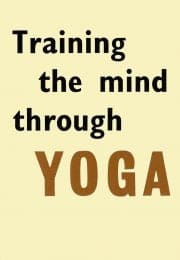Importance of Rhythm in Meditation
Before starting to meditate, there are three preliminary things to be established:
- a rhythm in timing
- a rhythm in posture
- a rhythm in the preparation to be carried out immediately before the actual meditation begins.
The more conscious a pupil becomes of his inner processes, the more aware he will be of his disharmony, and the more he will strive to correct it. Now in meditation, rhythm is all important. The concentration of thought itself on the actual meditation, and the acts which lead up to that point, should all be carried out in a rhythm; so the pupil must first establish a rhythm in timing. The meditation should be done at the same time every day. It is better to meditate for ten minutes and keep to it, than to allow the time and length of your meditation to change with circumstances. It ought to be the other way round. Just as a fixed time for meals creates a habit and is a helpful factor when the desire for food is weak, so when the mind is disturbed, the arrival of the time set apart for meditation may help to turn it in that direction. The digestive juices begin to work in the body as the time for a meal approaches, and in just the same way; the inner urge and sway towards meditation begins to make itself felt, as the time set apart for it approaches.
After the rhythm in timing, a rhythm in posture must be established. In this Yoga we are taught that the establishment of a posture is more important than the actual posture which is selected. The posture must, as far as possible, be independent of exterior things. For example, the floor is preferable to a chair for many reasons, but a strong one is that while you will always have a floor, you may well meet with chairs of different heights and sizes, or no chairs at all. The posture chosen must be able to be held for a long time for, whatever the pupil may think, his meditation will probably improve in due course, and he will wish to spend more time in it. It is traditional to keep the body motionless and erect, and the eyes either closed or half open. The Lotus posture and others, which are now familiar to the West, can be conquered at the beginning if the body is young enough and strong enough, but the teachers say that provided the posture can be maintained unbroken for as long as necessary, it may be considered as a suitable one. The aim of posture is to accustom the body to a position in which it may be forgotten. Some people will tell you that a posture is held in order to conserve and direct the inner psychic currents of energy in the body. Well, it may be so, but for our purposes it is considered more important to be able to forget the body altogether.
When the pupil has established a rhythm in time and posture, he stands at the threshold of the meditation itself and the preparation that he now makes is very important indeed. Preparation is a ritual, and ritual is a means of arresting the attention and heightening response through the power and attraction of ordered beauty and symbolism. The harmony it produces will be disturbed if it is given excessive importance, but it will probably be absent altogether if it is entirely disregarded.
Having reached this point then, what must our pupil do now? Some will say: “He must quieten his emotions, concentrate his attention and then start on his meditation.” No! It has been said that the cell of meditation is reached through a very low door, and that anyone who would enter there, must bend himself down before he can pass through. The divine Spirit, or the divine Presence, whichever symbol is most in accordance with the heart of the pupil, is there, though unseen, and the range and power of spiritual radiation is there also, though undetected as yet by the would-be meditator. He may not feel the spiritual presence or the spiritual power, but he must bow to it in faith all the same, and then, relaxing his hold on outer things, he should turn his inner eye in self forgetfulness on that which is unseen, and he must rest like this for a short while. In a sense he will be doing what an electrician does with a battery which has run down. He places the battery beside a charged one, connects it, and leaves it for a while, and the transfer of power is effected. The pupil places the depleted battery of his mind, emotions and will, beside the fully charged battery of the holy truth, connects them by faith, and so remains, relaxed and actionless. He will get to know how long to stay in this condition, and then he will be fit to enter into meditation.


